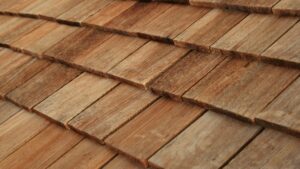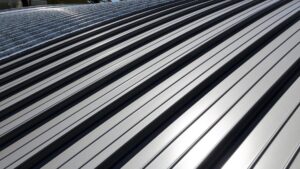The Lifespan of Different Roofing Materials: What to Expect

When it comes to choosing the right roofing material for your home, one of the most important factors to consider is longevity. The lifespan of your roof can vary greatly depending on the material you choose. Understanding how long different roofing materials last can help you make an informed decision and plan for future maintenance or replacement. In this post, we’ll explore the typical lifespans of common roofing materials and what you can expect from each one.
Asphalt Shingles
Asphalt shingles are one of the most popular roofing materials, known for their affordability and versatility. They come in a variety of styles and colors, making them suitable for a wide range of home designs.
Lifespan: 15 to 30 Years
The lifespan of asphalt shingles depends on the quality of the shingles and the climate in which they’re installed. In general, you can expect asphalt shingles to last between 15 and 30 years. Premium asphalt shingles may last longer, but weather conditions like high winds and extreme heat can shorten their lifespan.
Factors Affecting Lifespan:
- Climate: Extreme heat, humidity, and heavy storms can wear down asphalt shingles more quickly.
- Maintenance: Regular roof inspections and maintenance can help extend the lifespan of your asphalt roof.
Wood Shingles and Shakes

Wood shingles and shakes offer a natural, rustic look that can enhance the curb appeal of your home. However, they require more maintenance than other roofing materials and are more susceptible to weathering over time.
Lifespan: 20 to 40 Years
Wood shingles and shakes can last anywhere from 20 to 40 years, depending on the wood species, maintenance, and weather exposure. Cedar is a common choice for wood roofing because it is naturally resistant to decay.
Factors Affecting Lifespan:
- Maintenance: Regular treatments to prevent moss, mildew, and rot are essential for preserving the lifespan of wood roofing.
- Climate: Wood is sensitive to moisture, so homes in humid or rainy climates may experience shorter lifespans.
Metal Roofing

Metal roofing is gaining popularity for its durability and energy efficiency. Available in a variety of styles, including standing seam, corrugated, and metal shingles, metal roofs are designed to withstand extreme weather conditions.
Lifespan: 40 to 70 Years
Metal roofs have an impressive lifespan, typically lasting 40 to 70 years, depending on the material. Steel and aluminum are common choices, with aluminum roofs generally lasting longer due to their resistance to rust.
Factors Affecting Lifespan:
- Material Quality: Higher-quality metal roofs, like copper or zinc, can last longer than lower-cost options like steel.
- Maintenance: Metal roofs are relatively low maintenance, but periodic inspections for rust or damage are still recommended.
Clay and Concrete Tiles
Clay and concrete tiles are known for their beauty, longevity, and resistance to extreme weather conditions. These roofs are often seen in Mediterranean, Spanish, or southwestern-style homes.
Lifespan: 50 to 100 Years
Clay and concrete tile roofs are among the longest-lasting roofing materials available. With proper care, they can last anywhere from 50 to 100 years. Tile roofs are resistant to fire, rot, and insect damage, which contributes to their long lifespan.
Factors Affecting Lifespan:
- Weight: The weight of tile roofs requires a strong structural foundation, so installation may be more complex.
- Maintenance: While tiles are durable, they can break if not properly maintained. Regular inspections are recommended to ensure they stay intact.
Slate Roofing

Slate roofing is known for its sophisticated appearance and exceptional durability. It is often used on high-end homes and historic buildings due to its long lifespan and elegant look.
Lifespan: 75 to 200 Years
Slate is one of the longest-lasting roofing materials available, with an impressive lifespan of 75 to 200 years. Some slate roofs have been known to last centuries with proper care and maintenance.
Factors Affecting Lifespan:
- Quality of Slate: High-quality slate will last longer than lower-quality materials, so it’s important to choose reputable suppliers.
- Installation: Proper installation is critical to ensuring the roof lasts its full lifespan. Poor installation can lead to damage and early deterioration.
Synthetic Roofing Materials
Synthetic roofing materials, including synthetic slate, shake, and rubber roofing, have gained popularity as alternatives to traditional roofing materials. These products are designed to mimic the appearance of natural materials while offering enhanced durability and lower maintenance needs.
Lifespan: 40 to 50 Years
Synthetic roofing materials typically last around 40 to 50 years, depending on the product. Many synthetic options are resistant to cracking, warping, and fading, making them a reliable choice for homeowners looking for longevity and ease of maintenance.
Factors Affecting Lifespan:
- Quality of Material: The durability of synthetic roofing materials can vary depending on the manufacturer and the materials used.
- Maintenance: While synthetic materials are generally low maintenance, occasional cleaning and inspections are necessary to ensure their longevity.
Bottom Line
The lifespan of your roof depends largely on the material you choose. From short-lived asphalt shingles to long-lasting slate and tile roofs, there’s a wide range of options to suit your home’s needs and budget. By understanding the typical lifespans of various roofing materials, you can make a more informed decision and plan for future repairs or replacements. Regular maintenance and timely inspections can also help extend the lifespan of your roof, no matter the material.
